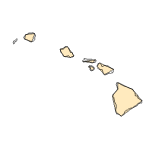Pogonichthys macrolepidotus
(Splittail)
Fishes
Native Transplant |
|
Common name: Splittail
Taxonomy: available through
www.itis.gov
Identification: Moyle (1976a); McGinnis (1984); Page and Burr (1991).
Size: 44 cm.
Native Range: Historically throughout Sacramento-San Joaquin River drainage, California; native populations now restricted to San Francisco Bay Delta and lower Sacramento River (Page and Burr 1991).



|

Alaska |

Hawaii |

Puerto Rico &
Virgin Islands |

Guam Saipan |
Hydrologic Unit Codes (HUCs) Explained
Interactive maps: Point Distribution Maps
Nonindigenous Occurrences:
Table 1. States with nonindigenous occurrences, the earliest and latest observations in each state, and the tally and names of HUCs with observations†. Names and dates are hyperlinked to their relevant specimen records. The list of references for all nonindigenous occurrences of Pogonichthys macrolepidotus are found here.
Table last updated 12/19/2025
† Populations may not be currently present.
Means of Introduction: Possibly came in with aqueduct water (Swift et al. 1993).
Status: Reported from California outside of its native range (Swift et al. 1993).
Impact of Introduction: The impacts of this species are currently unknown, as no studies have been done to determine how it has affected ecosystems in the invaded range. The absence of data does not equate to lack of effects. It does, however, mean that research is required to evaluate effects before conclusions can be made.
Other Resources:
FishBase Summary
Author:
Nico, L.
Revision Date: 12/5/2003
Peer Review Date: 12/5/2003
Citation Information:
Nico, L., 2025, Pogonichthys macrolepidotus (Ayres, 1854): U.S. Geological Survey, Nonindigenous Aquatic Species Database, Gainesville, FL, https://nas.er.usgs.gov/queries/FactSheet.aspx?speciesID=626, Revision Date: 12/5/2003, Peer Review Date: 12/5/2003, Access Date: 12/19/2025
This information is preliminary or provisional and is subject to revision. It is being provided to meet the need for timely best science. The information has not received final approval by the U.S. Geological Survey (USGS) and is provided on the condition that neither the USGS nor the U.S. Government shall be held liable for any damages resulting from the authorized or unauthorized use of the information.